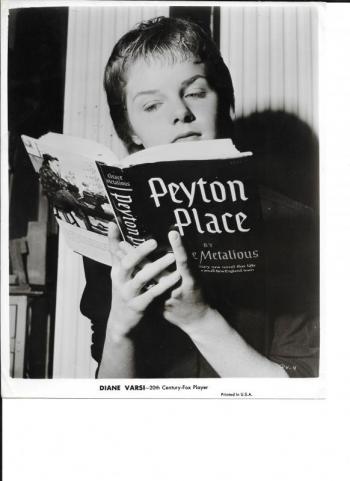Peyton Place digitally restored with new short film, and a novel-to-movie course
CAMDEN — It was a book that hit close to home for many Camden residents. This year marks the 60th anniversary of the publication of Grace Metalious’ novel Peyton Place. Steeped in controversy, this story, set in New England, was the best-selling novel up to that time. The movie adaptation, released the following year and nominated for nine Academy Awards, was shot extensively in the Midcoast area.
And now that the film is getting a new look, writer, director and producer Willard Carroll is excited to be involved.
“The movie is currently being restored, digitally, by 20th Century Fox and the Motion Picture Academy, and they’re actually doing a new 35-millimeter print when they re-show it in theaters, which is quite unusual,” he said. “Hopefully, we’ll be able to premiere that print this summer. There’s going to be a lot of interest in film festivals around it and we want to bring it to Maine first. The Blu ray will come out next year and I’ve been invited to do the audio commentary on that.”
In addition, Blu ray asked if Carroll would host a class discussing the novel’s transition to film. “I love talking about it, so I said sure,” he said.
Carroll said the film was the reason he and his partner moved to Maine after living in Los Angeles for 30 years.
“About 10 years ago, Camden was hosting the 50th anniversary of the movie being shot here and that was the first time I’d ever come to Maine,” he said. “I was here for about five minutes and decided I wanted to move here.”
In his spare time, Carroll went around to find all of the locations in the Midcoast where Peyton Place was originally shot and decided to make a short film titled On Location in Peyton Place. With the help of Camden historian Barbara Dyer, who’d already done extensive research on where the movie was shot, Carroll said, “She had about 99 percent of the locations already documented and I went out and found the remaining 1 percent of locations that hadn’t been found.”
All in all, for his film he shot 42 locations that appeared in the original film. “We shot it in early autumn so all of the fall colors were out,” he said. Carroll’s short film will also be part of the Blu ray edition being released this year.
On Tuesday, April 5, Carroll will host the first of a two-night class at Camden Hills Regional High School in Rockport. The first class will be a screening of Peyton Place with some introductory remarks and discussion.
“Assuming there are still people who haven’t seen the movie, I don’t want to give away spoilers,” he said.
The second night, on Tuesday, April 12, will feature a discussion of the considerable page-to-screen adaptation challenges presented by an “unfilmable” book and conclude with an overview of the Maine locations used in the movie. “The second class is more a dissection of the movie,” he said.
“When the book was first published in 1956, it was an instant success, but it was a very daring novel,” Carroll said. “The reason it was so controversial is because it was written by a woman and it was a very sexually explicit book. And the reason it was considered unfilmable was because of the censorship rules at the time. Still, it ended up for about a 10-year period to be the biggest selling novel of all time. The movie is a heavily sanitized version of the book, but it’s still an adult-oriented film. After faltering at the box office initially, the film became the second highest grossing film of 1957.”
Peyton Place’s other resounding theme revolves around the secrets that lie under the surface of a picture postcard town such as Camden.
“At the time, other books written by women about career women were all set in big cities, which had a different moral compass than small town America did,” said Carroll. “Peyton Place investigated this idealized notion of small town life and undercut the myths. The significance of the book is that it ripped the veil off aspects of society that were known, but rarely acknowledged, particularly in popular entertainment."
Asked if anything has changed since 1956 when it comes to small town life Carroll said, “The book is also about huge economic divisions and how that impacted the society. That has not changed and that will never change. It’s sort of a universal theme.”
The course, run by Five Town CSD, is $25, which covers both nights. More details can be found here.
Kay Stephens can be reached at news@penbaypilot.com


.jpg)






























